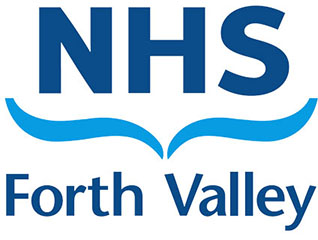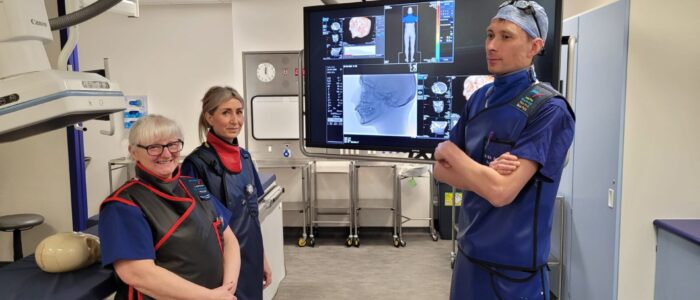New State-of-the-Art Imaging Machines Improve Diagnosis & Treatment
Two new state-of-the art imaging machines, including one which is the first of its kind in Scotland, have been installed at Forth Valley Royal Hospital to help improve the diagnosis and treatment of a wide range of health conditions.
The digital machines, also enable images to be captured far quicker than previous imaging equipment, which not only improves the experience for patients, but increases the number of cases which can be carried out each day.
The new Ultimax-i machine, which has been installed in the fluoroscopy room within the Radiology Department, enables high quality images and videos to be captured using contrast dye. This technology can be used to examine patients experiencing difficulties chewing and swallowing food, which can often happen after a stroke, and assess joints to identify if a patient would benefit from a hip or knee replacement. It can also be used to help position catheters and PICC lines (thin, flexible tubes which can be used to carry fluids in or out of the body, including antibiotics and chemotherapy drugs), guide needles used to inject local anaesthetic into joints. In addition, it can be used to insert stents to treat patients with a range of cancers, including bowel, stomach, gallbladder and liver cancer and supports a wide range of investigation carried out by the Endoscopy Department.
The Interventional Room within the Radiology Department has also been upgraded with the installation of a new Alphenix Sky+ system. This is the first of its kind to be installed in Scotland and with its double C Arm has the unique ability to fully rotate from either side of the patient table and capturing images from every angle. The machine is used to carry out a range of complex procedures and scans including inserting small metal coils into veins or arteries to cut off the blood supply to cancerous tumours and place stents which can then be expanded to help clear blockages and maintain blood flow. These minimally invasive techniques can be used to treat a wide range of patients including those with heart, renal and prostate conditions which previously would have required major surgery. It can also be used to carry out investigations of the uterus for women experiencing fertility issues and treat uterine fibroids, avoiding the need for more invasive procedures or surgery. Both rooms are used by the Cardiology Team to insert cardiac pacemakers and defibrillators into patients which enables them to be seen on a day case basis, instead of having to going to theatre.
As well as using the very latest digital technology to capture and manipulate crystal clear images, both machines, which represent a planned investment of around £1 million, use lower doses of radiation than previous machines which is better for patients, especially those who require multiple scans during their treatment.
Jennifer Gilchrist, Radiology Services Manager, NHS Forth Valley, said: “Technology has moved on significantly since the hospital opened and, although the previous radiology equipment has served us well, these new state-of-the-art machines provide clearer, high-quality images and the ability to carry out a range of more complex procedures which some patients had to travel to Glasgow for in the past.
“Advances in digital technology captures images far faster than older machines which enables us to image more patients each day and keep pace with increasing demand. This helps free up inpatient beds as the majority of patients can be treated and return home on the same day. Improved image quality also enables our Radiology Advanced Practice Nurses to complete more cases and supports their ongoing training and development.”
Additional Information
The Radiology Department at Forth Valley Royal Hospital comprises of 8 X-ray rooms (7 general and one dental), 2 CT scanning rooms, 2 MRI scanning rooms, 2 mammography rooms, 4 ultrasound rooms, 2 fluoroscopy rooms and one interventional radiology rooms along with two X-ray rooms and two ultrasound rooms in the Minor Injuries Unit at Stirling Health and Care Village. The Department is also in the process of installing a state-of-the-art SPECT CT unit in the Nuclear Medicine Department which will be operational in April 2024.
The service employs over 100 staff including Radiographers, Clinical Support Workers, Radiology Assistant Practitioners, Consultant Radiographers, Consultant Radiologists, and administrative staff. The service carries out around 15 – 16,000 scans/images every month and sees over 180,000 patients each year.



